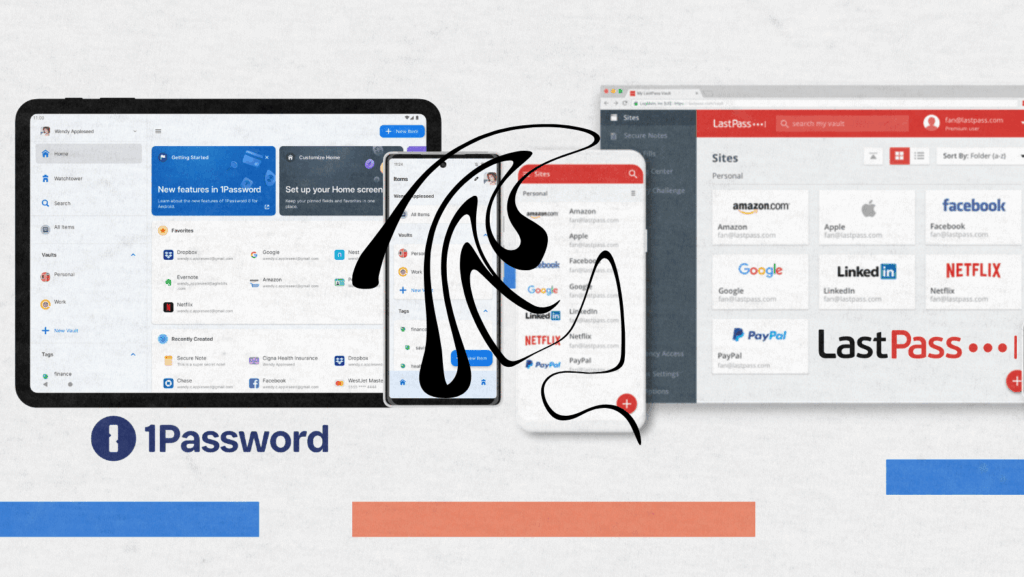There are 1.7 million online searches for independent contractors each month. Most contractors do an outstanding job, but they very often remain invisible where it matters most—on Google search results. While your competition is securing projects through online searches, you’re still relying on word-of-mouth referrals and traditional, expensive advertising.
The truth? More than 90% of prospective customers research construction services online before they ever call to inquire. And if your construction business isn’t appearing in local search results, you’re basically leaving qualified leads on the table.
This guide will take you through everything you need to know, from dominating local listings to building authority that converts browsers into buyers.
TL;DR
- SEO increases your visibility over time in search results, driving qualified leads, whereas SEM, or paid ads, yield quicker results.
- Local SEO is crucial: optimize your Google Business Profile, establish local citations, and target specific service areas for improved local rankings.
- Core SEO Focus:
- Keyword Research: Target location-based, high-intent keywords and long-tail keywords for better conversions.
- Technical SEO: By ensuring mobile optimization, fast page loads, HTTPS security, and proper schema markup.
- On-page SEO involves optimizing titles, meta descriptions, and headers to benefit both users and search engines.
- Local SEO Strategies:
- Google Business Profile: Keep it updated with accurate information, relevant photos, and genuine reviews.
- Citations: Consistent business listings across local and industry-specific directories (Yelp, Houzz, Angi).
- Service Area Pages: Develop a dedicated page for every location you serve
- Content Strategy: Focus on authoritative service pages, case studies, and blogs customized to the market.
- Off-Page SEO: Acquire high-quality backlinks through partnerships, guest posting, and sponsorships.
- Advanced Tactics: Use video content, voice search, and CRO for better conversions.
- SEO Timeline: Improvement is expected within 3-6 months; significant growth to begin within 12 months.
- Mistakes to Avoid: Duplication of content, being non-mobile friendly, keyword stuffing, and poor backlinks.
Invest in SEO now to outpace competitors and generate more leads!
What Is SEO for Construction Companies?
SEO for the construction industry is not just some abstract marketing buzzword. It’s the practice of improving your construction company’s visibility online so that you show up when someone searches for “commercial contractors near me” or “residential construction companies in [your city].”
Here is the difference that counts: SEO builds long-term organic visibility through strategic content and technical improvements, while SEM, or search engine marketing, offers immediate results through paid ads. Think of SEO as creating a strong foundation-it may take some time, but it supports everything else you’re doing online.
Why Construction Companies Need SEO in 2025
The construction industry has fundamentally changed how it finds clients:
- Research happens before contact: Before requesting a single quote, clients do online research to compare multiple contractors.
- Mobile-first searching: The majority of people now search on smartphones exactly when they need construction services. Local competition is fierce. Your competitors are already investing in SEO for a construction company; remaining visible means staying competitive.
The payoff? Construction SEO generates leads with higher close rates and lower acquisition costs than traditional advertising. Instead of chasing projects, qualified leads come to you.
Why Local SEO Matters for Your Construction Business
Local search optimization is the backbone of any successful construction SEO campaign. When someone searches “home builder near me” or “construction services in Boston,” Google’s algorithm prioritizes businesses with strong local signals.
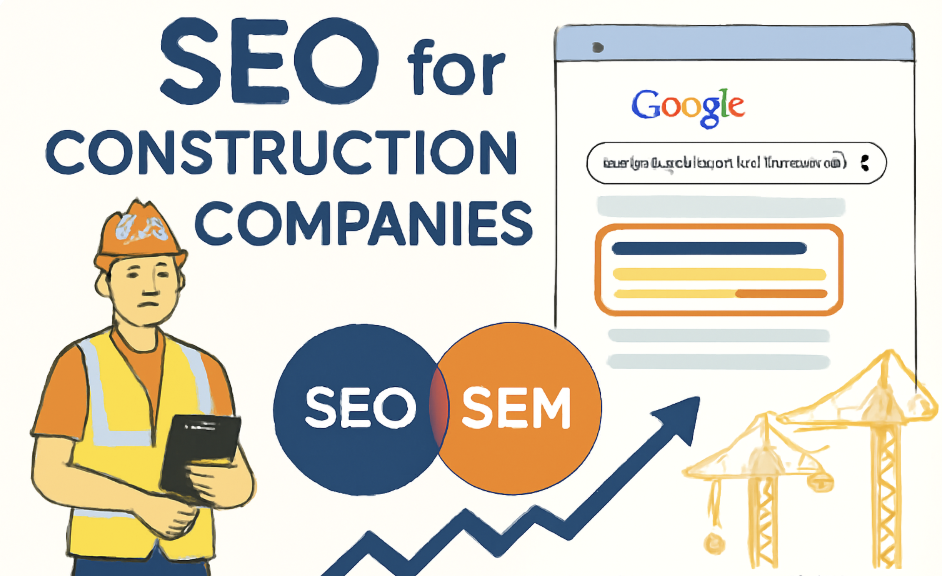
What local SEO delivers for construction companies:
| Benefit | Impact on Your Business |
| Consistent lead flow | Predictable project pipeline without cold calling |
| Higher profit margins | Inbound leads are easier to close and negotiate |
| Geographic targeting | Reach clients in specific service areas |
| Competitive edge | Outrank competitors in your market |
The challenge most construction businesses face? Thin website content, poor mobile optimization, and inconsistent local listings that confuse search engines and frustrate potential clients.
Core Pillars of Construction SEO
Keyword Research: Speaking Your Client’s Language
Before you optimize anything, you need to understand what construction clients are actually searching for. Residential construction companies attract different searches than commercial contractors—your keyword research should reflect that.
Start with these high-intent keywords:
- “General contractor in [city name]”
- “Commercial construction services near me”
- “Home remodeling cost [location]”
- “Licensed builders [service area]”
Tools like Google Keyword Planner, Ahrefs, and SEMrush reveal search volume and competition levels. However, don’t just chase high-volume terms—long-tail keywords, such as “sustainable home builder in Portland, Oregon,” attract fewer searchers but convert at much higher rates.
The secret? Match keywords to buyer intent. Someone searching “construction project timeline” is researching. Someone searching for “emergency roof repair contractor” is ready to hire today.
Technical SEO: The Foundation Everything Sits On
Your website may have brilliant content, but if its technical SEO is flawed, search engines won’t rank it. Period.
Critical technical elements for construction websites:
- Mobile responsiveness – Over 60% of construction searches happen on phones
- Page load speed – Slow sites lose potential clients within 3 seconds
- HTTPS security – Google penalizes unsecured sites in search rankings
- Schema markup – Structured data that helps search engines understand your services, reviews, and location
- XML sitemap – Ensures search engines can crawl every vital page
Fix these basics before investing in content or link building. A technically sound site amplifies all your other SEO efforts.
On-Page SEO: Optimizing Every Element
On-page SEO means crafting each page to satisfy both search engines and human visitors. Every service page, project portfolio, and blog post should follow these principles:
- Title tags should include your primary keyword and location (under 60 characters)
- Meta descriptions need compelling copy that encourages clicks (150-160 characters)
- Header structure (H1, H2, H3) should organize content logically, with relevant keywords naturally integrated
- Image alt text describes visuals for accessibility while including descriptive keywords
- Internal linking connects related pages, spreading authority throughout your site.
Don’t keyword-stuff. Search engines are sophisticated enough to recognize natural language and penalize manipulation.
Local SEO Mastery: Dominating Your Service Area
Google Business Profile Optimization
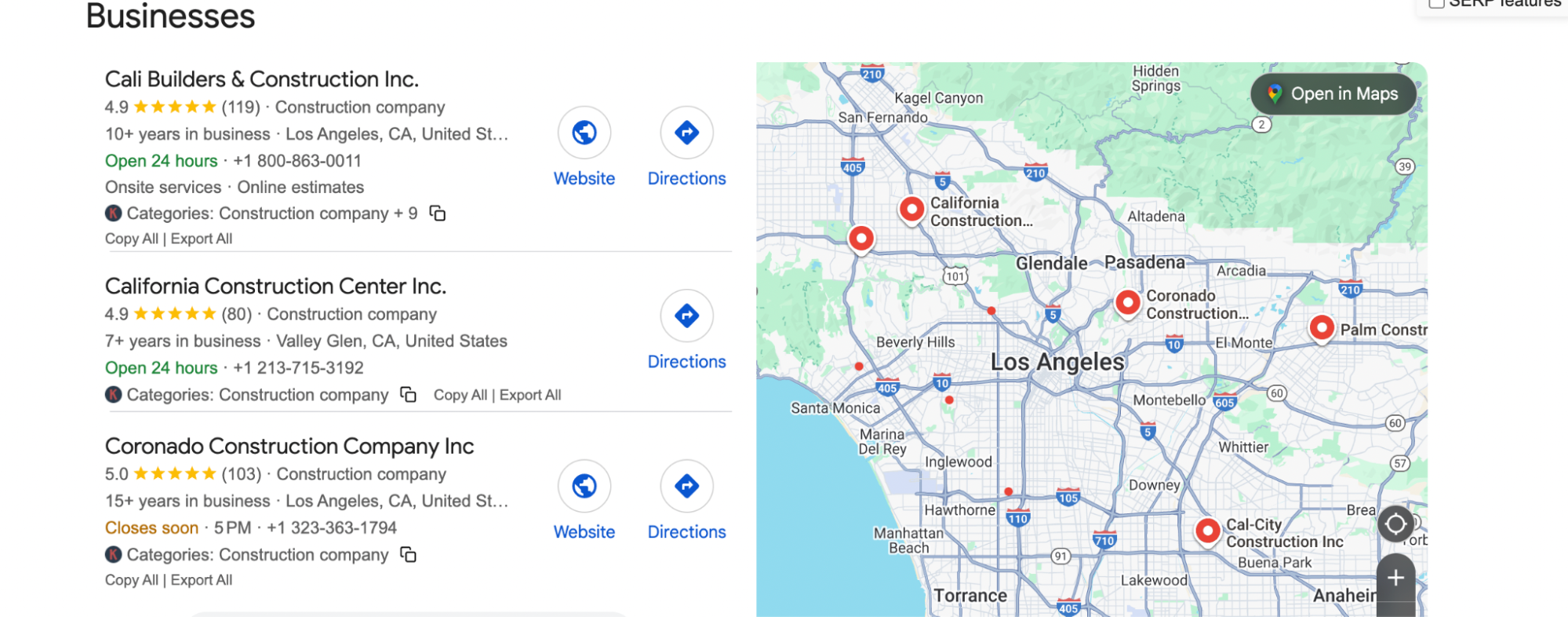
Your Google Business Profile (formerly Google My Business) is the single most important local SEO asset for construction companies. It controls what appears in the “map pack”—those three business listings that dominate local search results.
Optimization checklist:
- Select the most specific business categories (not just “contractor”)
- Upload high-quality photos of completed construction projects every week
- Write a keyword-rich business description that explains your construction services
- Add all service areas and update hours accurately
- Enable messaging so potential clients can contact you directly
The game-changer? Reviews. Actively request reviews from satisfied construction clients and respond to every single one—positive or negative. Google rewards engaged businesses with better search rankings.
Building Local Citations
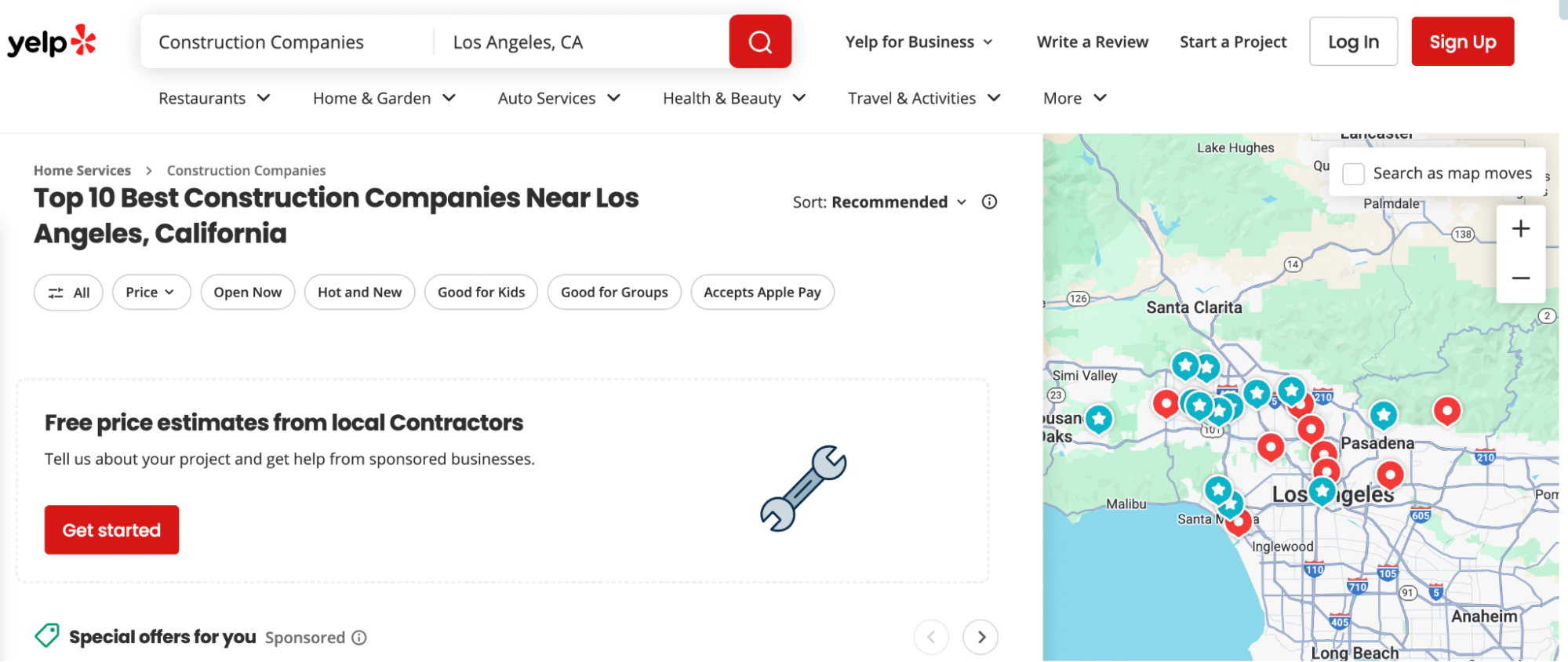
Citations are online mentions of your business name, address, and phone number (NAP). Search engines cross-reference these to verify your legitimacy and service area.
Where to build citations:
- Industry directories (Houzz, BuildZoom, Angi)
- Local business listings (Yelp, Apple Maps, Bing Places)
- Chamber of Commerce websites
- Industry associations (AGC, NAHB)
Consistency is critical. If your NAP information varies across platforms, search engines get confused and your local search rankings suffer.
Service Area Pages: Targeting Every Location
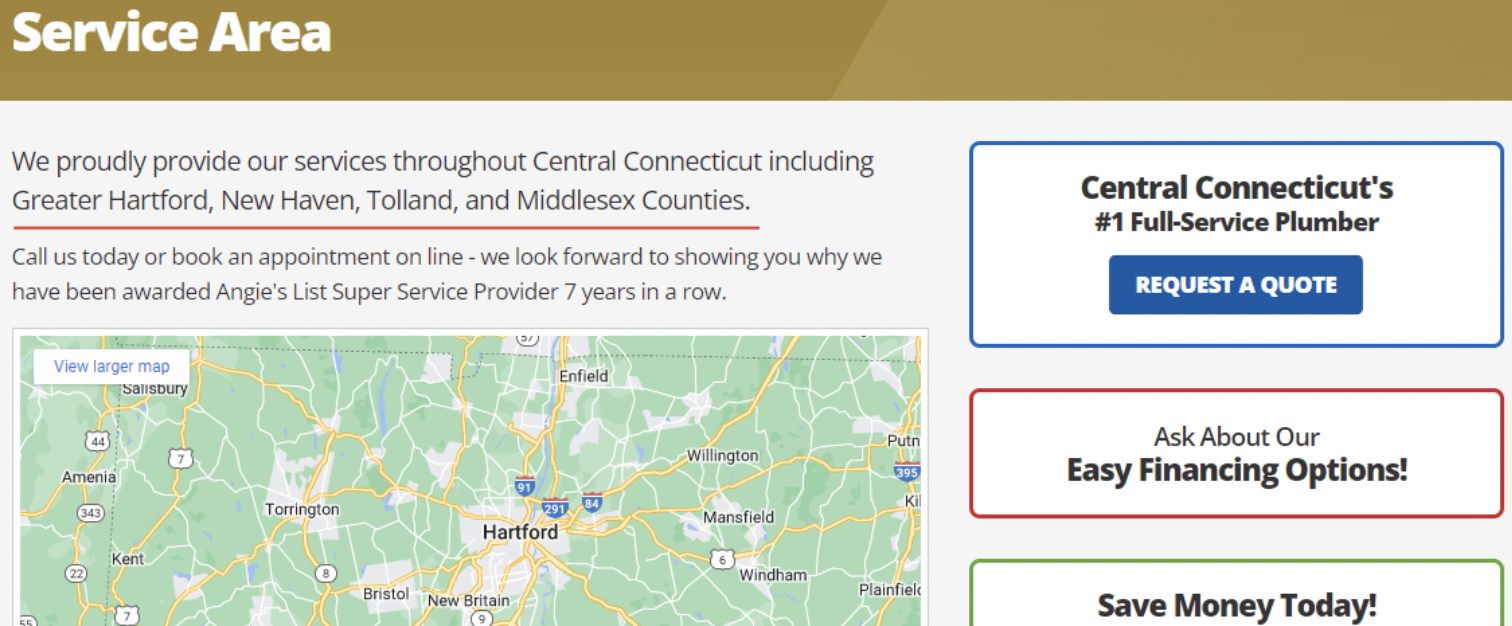
If you serve multiple cities, create dedicated pages for each location. These aren’t just “City + Service” copy-paste jobs—each service page should include:
- Specific local information and landmarks
- Customer testimonials from that area
- Photos of construction projects in that location
- Unique content about local building codes or regulations
This strategy helps residential construction companies and commercial contractors dominate search rankings across entire regions instead of just one city.
Content Strategy: Build Authority, Not Just Pages
Content marketing separates thriving construction businesses from those stuck in obscurity. But this isn’t about cranking out blog posts—it’s about demonstrating expertise that converts readers into construction clients.
Service Pages That Actually Convert
Your service page is where SEO meets sales. Each construction service you offer deserves its own detailed page covering:
What to include:
- Specific service description (e.g., “commercial tenant improvements” not just “renovations”)
- Process overview from consultation to completion
- Portfolio examples with before/after images
- Pricing transparency (ranges, not exact quotes)
- Clear calls-to-action (“Request a Free Estimate”)
These pages should target relevant keywords naturally while addressing every question a potential client might have.
Project Portfolios: Show, Don’t Just Tell
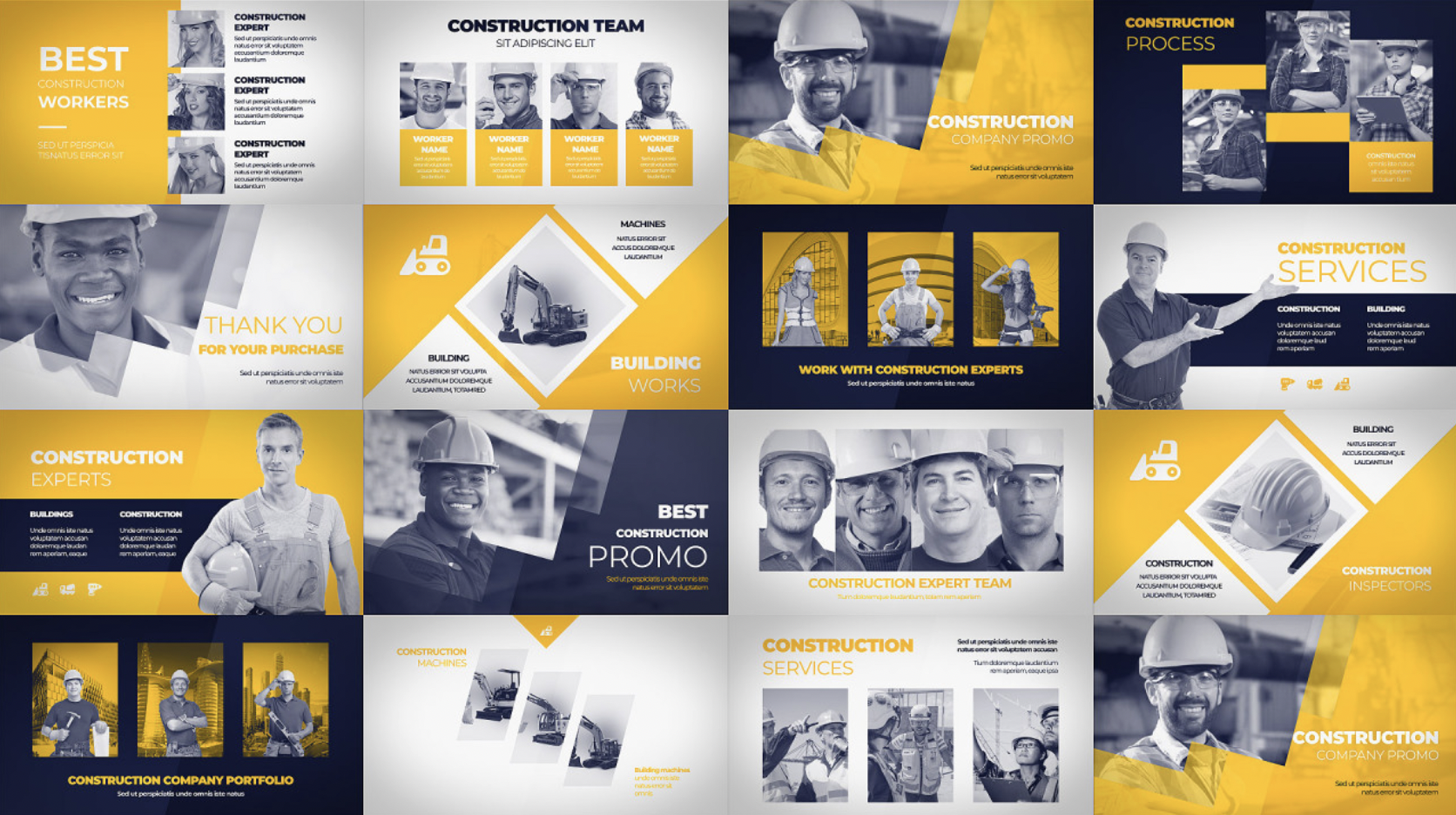
Case studies and project galleries serve double duty—they showcase your construction projects while generating organic traffic through image search and long-form content.
Structure winning case studies around:
- Client challenge or project goals
- Your solution and approach
- Specific construction services provided
- Results with measurable outcomes
- Client testimonials
Tag images with descriptive filenames and alt text like “modern-office-renovation-seattle-commercial-construction.jpg” to capture relevant keywords.
Blogging for Construction SEO
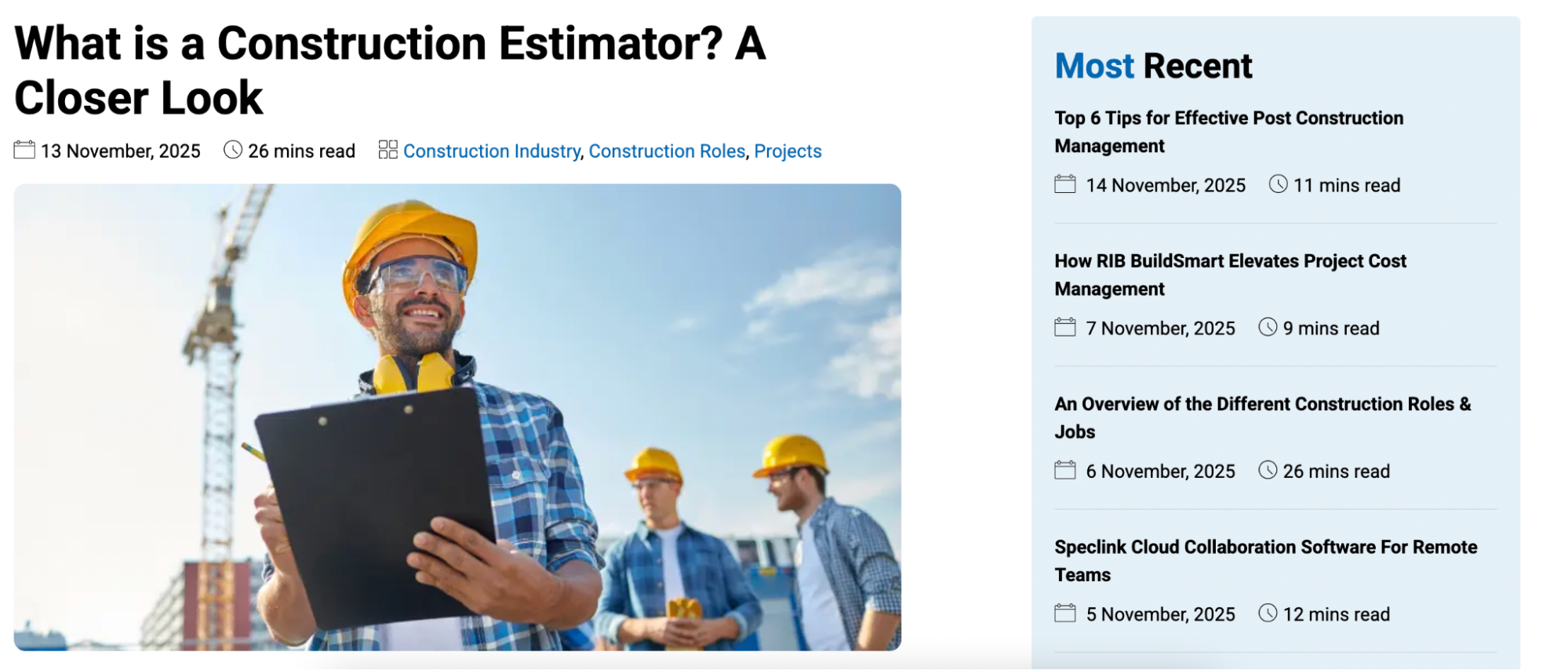
A construction blog isn’t a nice-to-have—it’s your authority-building engine. But forget generic “5 Tips for Hiring a Contractor” fluff pieces. Write content that demonstrates deep expertise:
- Explaining complex building code requirements
- Breaking down cost considerations for major construction projects
- Comparing materials and construction methods
- Addressing seasonal construction challenges in your region
Pro tip: Interlink blog posts with your service pages. When you write about “common commercial HVAC issues,” link to your commercial construction services page. This internal linking distributes authority and guides potential clients through your site.
Update old blog posts quarterly with current information to maintain search engine rankings.
Off-Page SEO: Building Authority Beyond Your Website
Off-page SEO is everything that happens away from your website but impacts your search rankings—primarily through link building and brand mentions.
Quality Over Quantity in Link Building
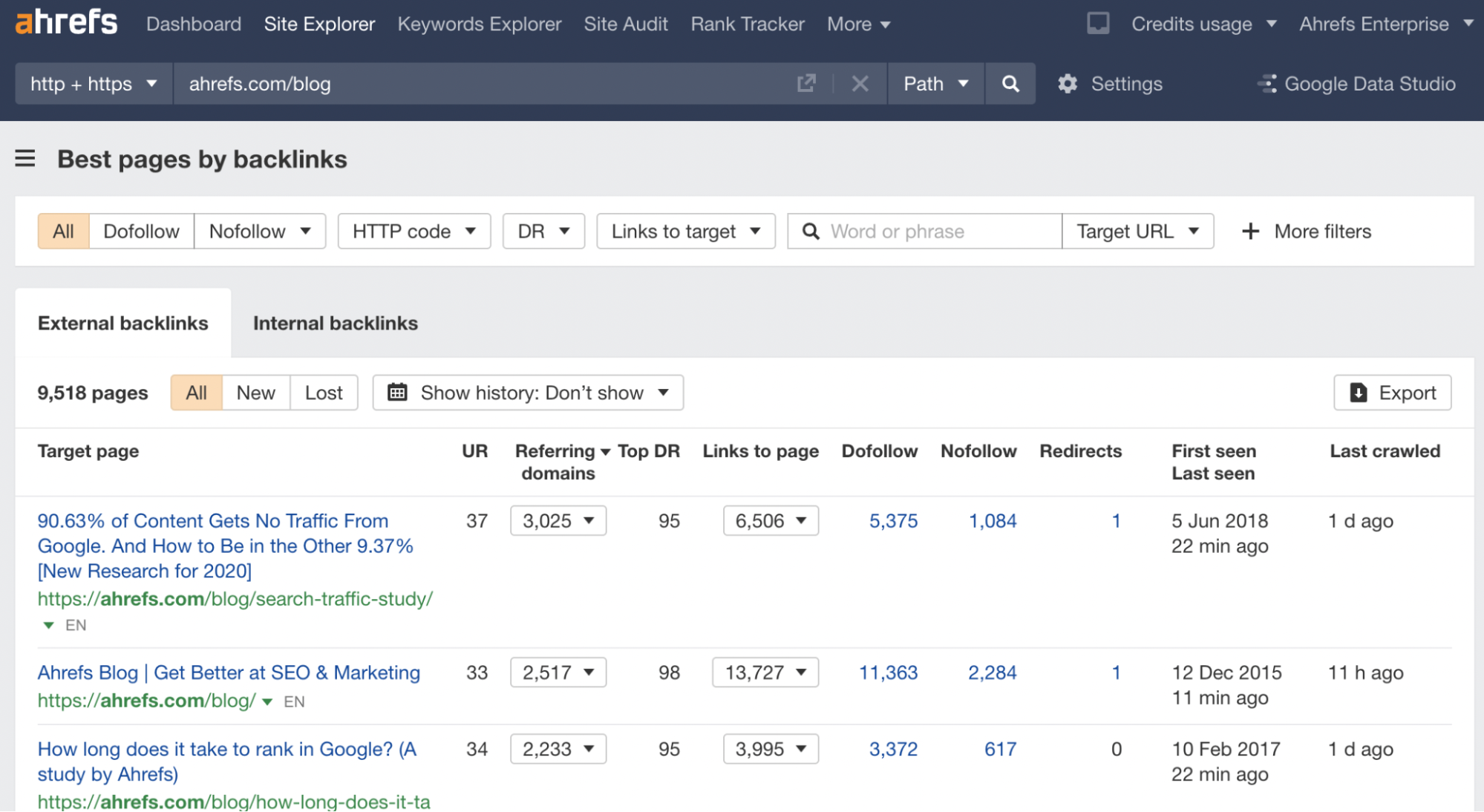
One backlink from a respected construction industry publication carries more weight than 100 links from random directories. Focus on earning links through:
- Strategic partnerships – Collaborate with architects, suppliers, and complementary businesses that link to your site
- Local sponsorships – Support community events or teams to establish a local business link.
- Industry associations – Join AGC, NAHB, or regional construction groups
- Guest contributions – Write expert articles for industry blogs and local publications
- Press releases – Announce major construction projects or company milestones.
Avoid link farms, paid link schemes, or irrelevant directory spam. Search engines are sophisticated enough to detect manipulation and will penalize your site.
Affiliate Editorial Reviews: External Validation That Converts
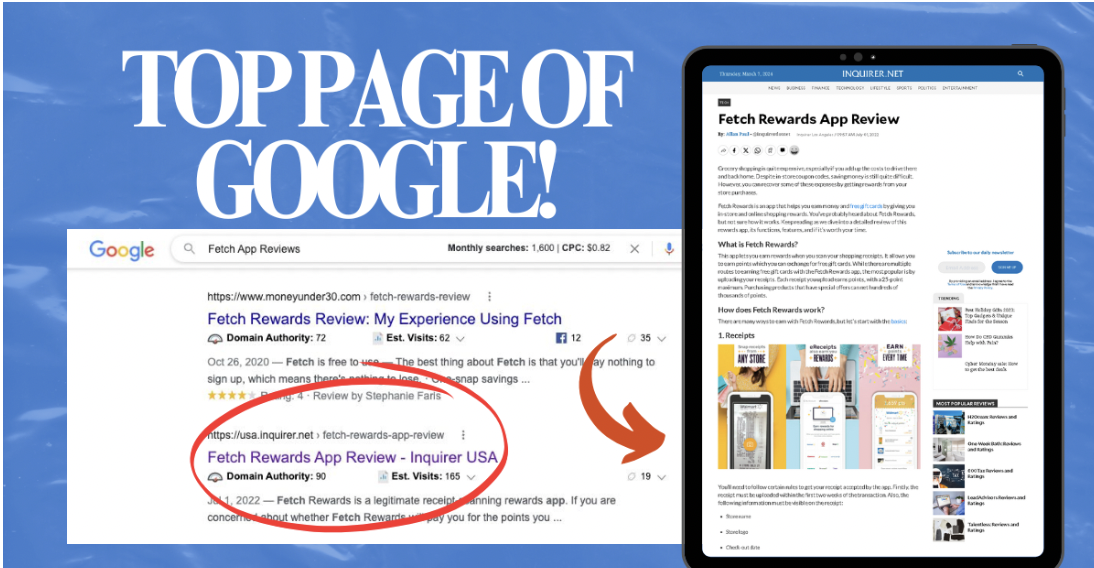
Here’s an often-overlooked off-page SEO strategy: securing editorial reviews on trusted third-party sites. These aren’t ads—they’re credible articles about your construction company published on authoritative platforms.
Why affiliate reviews supercharge construction company SEO:
- Third-party validation builds trust faster than self-promotion
- High-authority backlinks from respected publishers boost search rankings
- Referral traffic arrives pre-qualified and ready to convert
Types of editorial content that work:
- Brand features highlighting your company’s unique approach
- Project spotlights showcasing notable construction projects
- “Best contractor” listicles for ongoing exposure
Partner with platforms like LeadAdvisors to secure placements that combine credibility with SEO power.
Advanced SEO Strategies for Construction Companies
Conversion Rate Optimization (CRO)
Driving traffic means nothing if visitors don’t convert into leads. CRO focuses on turning browsers into buyers through strategic design and messaging.
High-converting elements for construction sites:
- Above-the-fold CTAs like “Get Your Free Construction Estimate”
- Social proof sections featuring reviews, awards, and certifications
- Simplified contact forms (name, email, phone, project type—nothing more)
- Live chat or chatbots for immediate engagement
- Trust indicators, including licenses, insurance, and associations
Test different layouts, button colors, and messaging to see what resonates with potential clients in your market.
Video & Visual SEO
Construction is a visual industry—leverage that with video content that showcases your craftsmanship while boosting SEO performance.
Video content that ranks:
- Time-lapse construction project videos
- Virtual property tours and walkthroughs
- Client testimonial interviews
- Behind-the-scenes crew and equipment footage
- Process explanations and how-to content
Upload to YouTube with keyword-optimized titles, detailed descriptions, and transcripts. Embed videos on corresponding service pages to increase time-on-site—a positive ranking signal.
Voice Search Optimization
“Hey Siri, find construction companies near me.”
Voice search queries are conversational and question-based. Optimize for them by:
- Using natural language in your content
- Creating FAQ pages that answer specific questions
- Targeting “near me” keywords in local content
- Implementing structured data for featured snippets
Voice search often pulls from position zero (featured snippets), so structure content in easily quotable formats.
Building Your Local SEO Funnel
A construction SEO campaign needs a systematic approach. Here’s the proven framework:
Phase 1: Audit & Foundation (Month 1)
Website audit
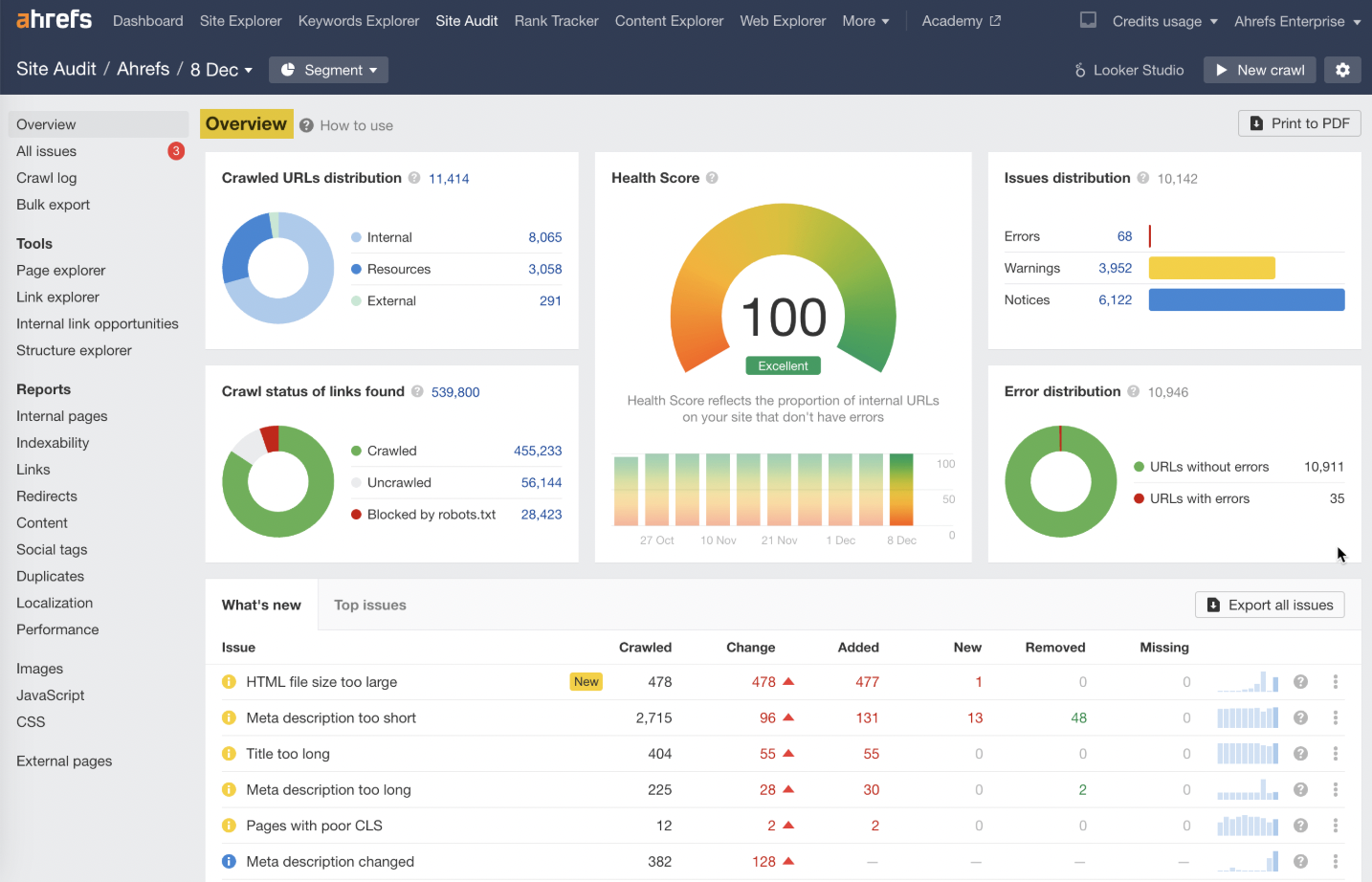
Identify technical issues, content gaps, and optimization opportunities. Run your site through tools like Google PageSpeed Insights and Screaming Frog to catch broken links, slow-loading pages, and mobile responsiveness problems. Document every issue with priority levels—some technical problems can tank your search rankings overnight if left unaddressed.
Competitor analysis
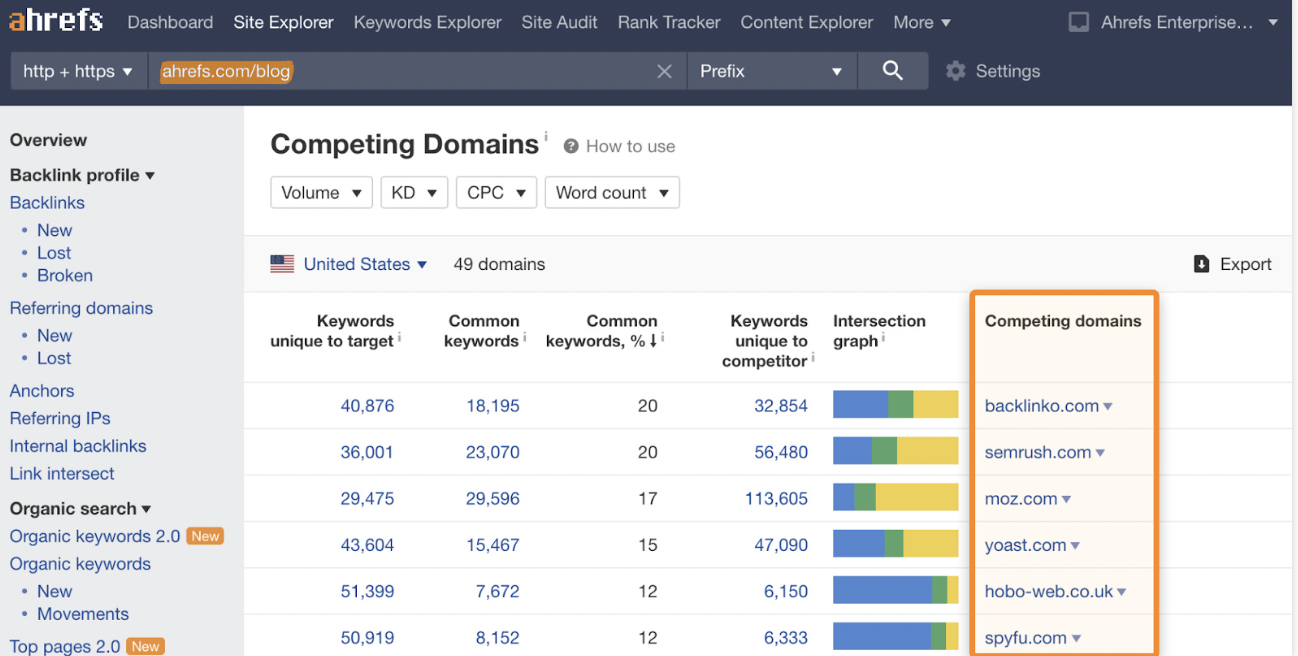
Study what’s working for top-ranking construction businesses in your area. Analyze their keyword targets, content strategies, backlink profiles, and Google Business Profile optimization. Look for gaps in their coverage—these represent opportunities where you can outrank them. Pay special attention to how they structure their service pages and what type of construction projects they showcase.
Keyword mapping
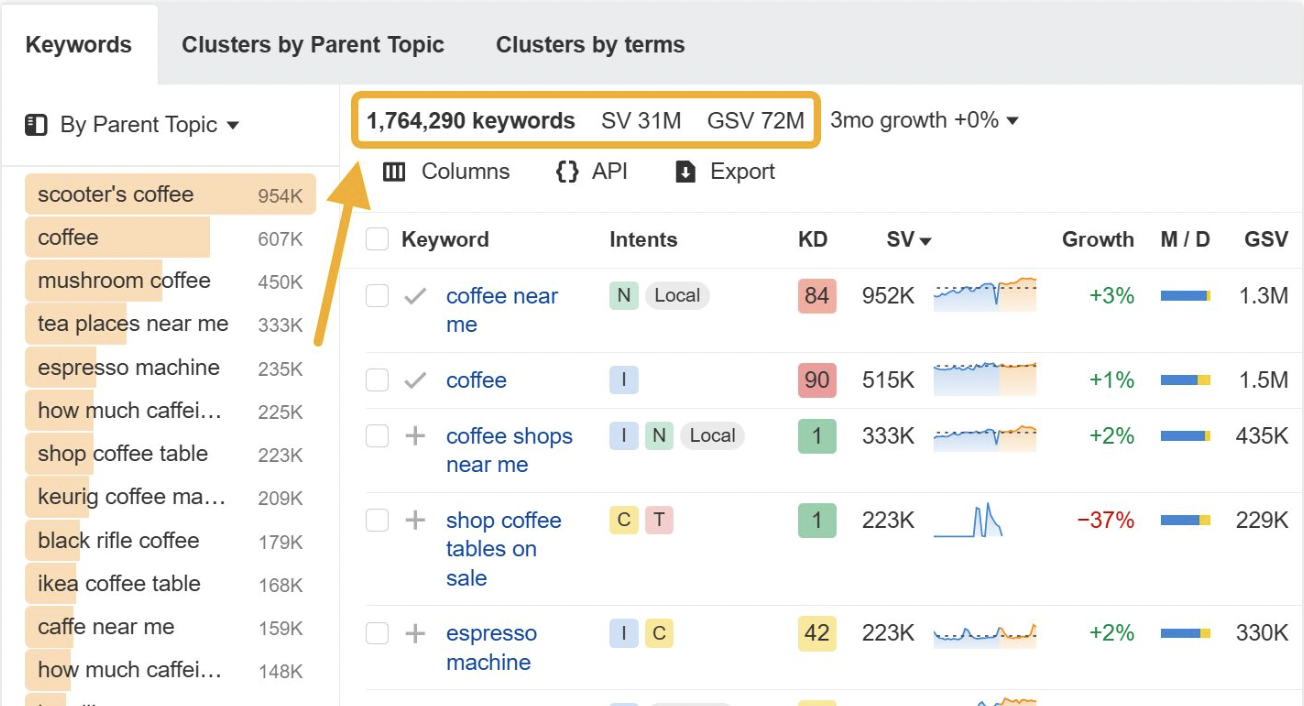
Assign target keywords to existing and new pages. Create a spreadsheet that maps primary and secondary keywords to specific URLs. Each service page should target one main keyword plus 2-3 related terms. Don’t cannibalize—avoid targeting the same keyword on multiple pages, which confuses search engines and dilutes your ranking potential.
Phase 2: Optimization & Creation (Months 2-3)
Technical fixes
Resolve speed, mobile, and security issues identified in your audit. Compress images, enable caching, upgrade to HTTPS if you haven’t already, and ensure your site renders perfectly on smartphones and tablets. These aren’t optional—Google’s mobile-first indexing means your mobile site performance directly impacts all your search rankings.
On-page optimization
Update titles, descriptions, headers, and content across your entire site. Rewrite thin pages with substantial, keyword-rich content that actually answers potential clients’ questions. Add internal links connecting related pages. Install schema markup for local businesses, reviews, and services. This phase transforms your existing pages from basic placeholders into conversion-focused assets.
Google Business Profile
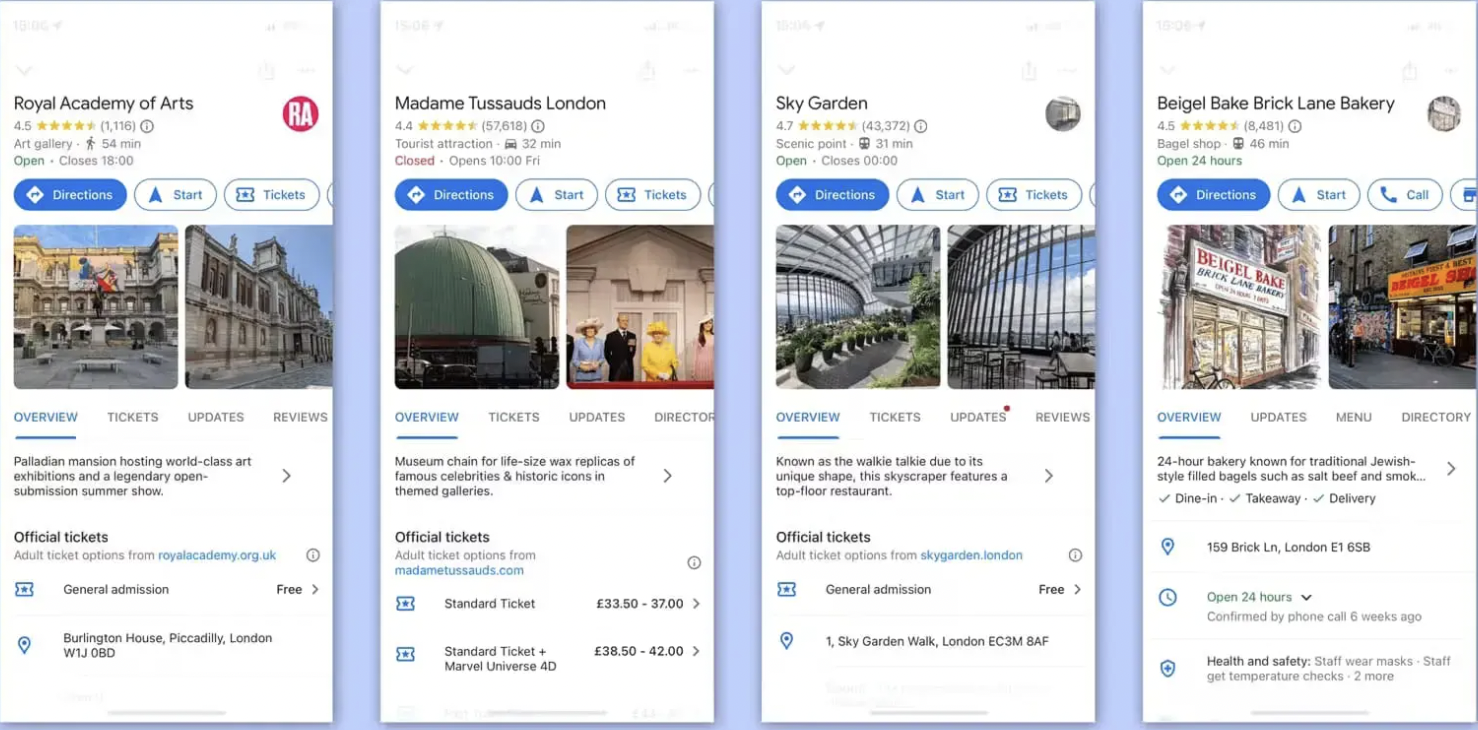
Complete optimization with photos, posts, and review requests. Upload at least 10 high-quality photos of recent construction projects. Write a compelling business description that naturally includes your target keywords and service areas. Create your first Google post announcing a completed project or seasonal service. Set up a review generation system—ask every satisfied client immediately after project completion.
Initial content
Launch priority service pages and location pages based on your keyword mapping. Each service page needs 800+ words covering what you do, how you do it, why clients choose you, and clear calls-to-action. Location pages should include neighborhood-specific details, local project examples, and references to area landmarks or building regulations. Quality over quantity—five exceptional pages outperform twenty mediocre ones.
Phase 3: Authority Building (Months 4-6)
Content production
Publish weekly blog posts and project case studies that demonstrate expertise and target long-tail keywords. Focus on topics your construction clients actually care about: “How much does commercial renovation cost in [city]?”, “Choosing materials for coastal construction”, or “Timeline expectations for office build-outs”. Each post should link to relevant service pages, keeping visitors moving through your site.
Link building
Earn backlinks through outreach and partnerships. Contact local suppliers, architects, and real estate professionals about mutual linking opportunities. Submit your best projects to architecture and design publications. Sponsor community events for backlinks from event pages. Write guest articles for industry blogs. One quality backlink from a respected source beats 100 directory links.
Citation building
Establish NAP consistency across directories. Create or claim listings on Yelp, Houzz, BuildZoom, Angi, Thumbtack, Apple Maps, and Bing Places. Join your local Chamber of Commerce and relevant industry associations for authoritative citations. Ensure your business name, address, and phone number match exactly everywhere—even small variations like “St.” vs “Street” can hurt your local search optimization.
Review generation
Implement systematic review request process. Send personalized emails to completed projects within 48 hours of final walkthrough. Provide direct links to your Google Business Profile review page. Respond to every review within 24 hours—thank positive reviewers specifically and address negative feedback professionally. Reviews are one of the strongest ranking signals for local businesses.
Phase 4: Refinement & Growth (Months 7-12)
Performance tracking
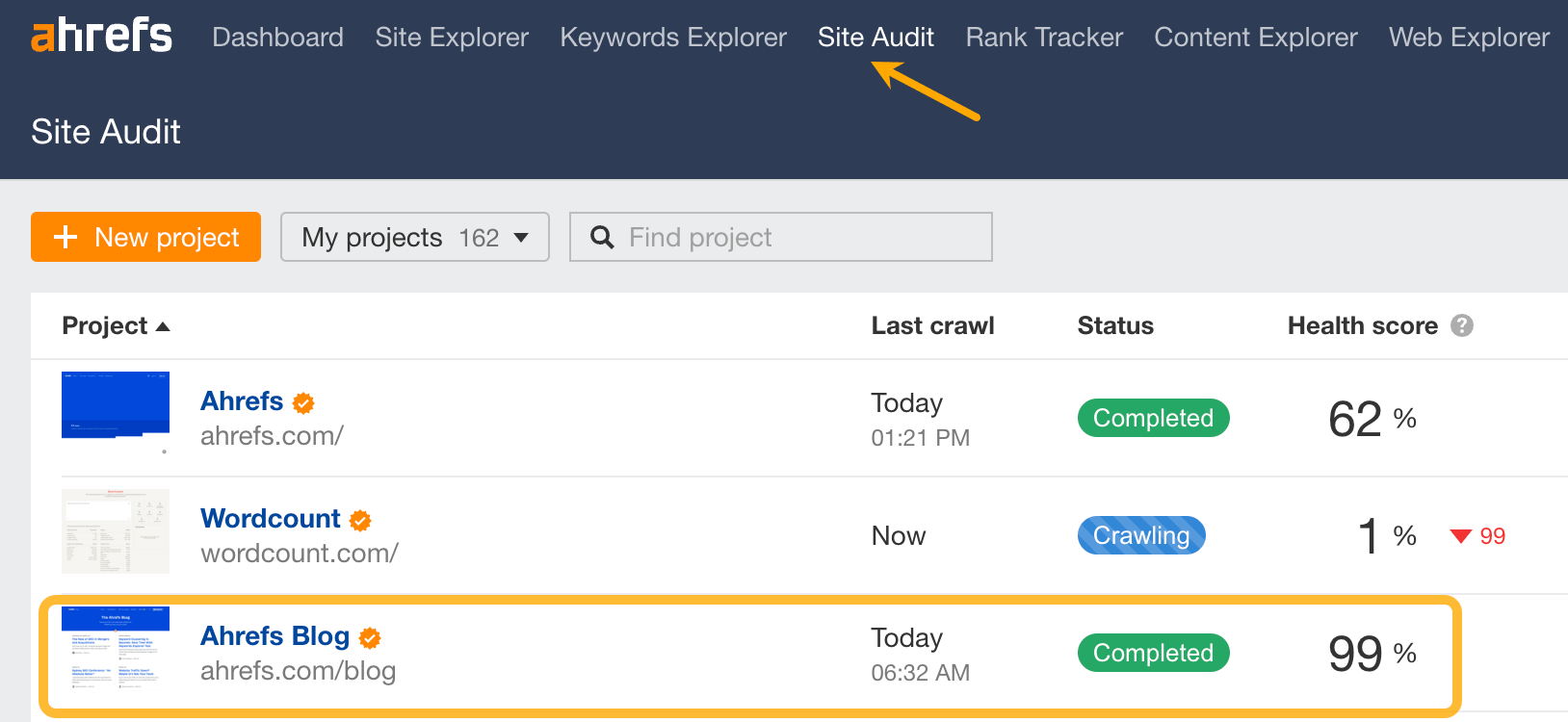
Monitor rankings, traffic, and conversions using Google Analytics and Search Console. Track which keywords are driving qualified leads versus just traffic. Identify high-performing content to replicate that success. Watch your Google Business Profile insights for patterns—which photos get the most views? What times do people search for you? Use this data to refine your SEO strategies continuously.
Content updates
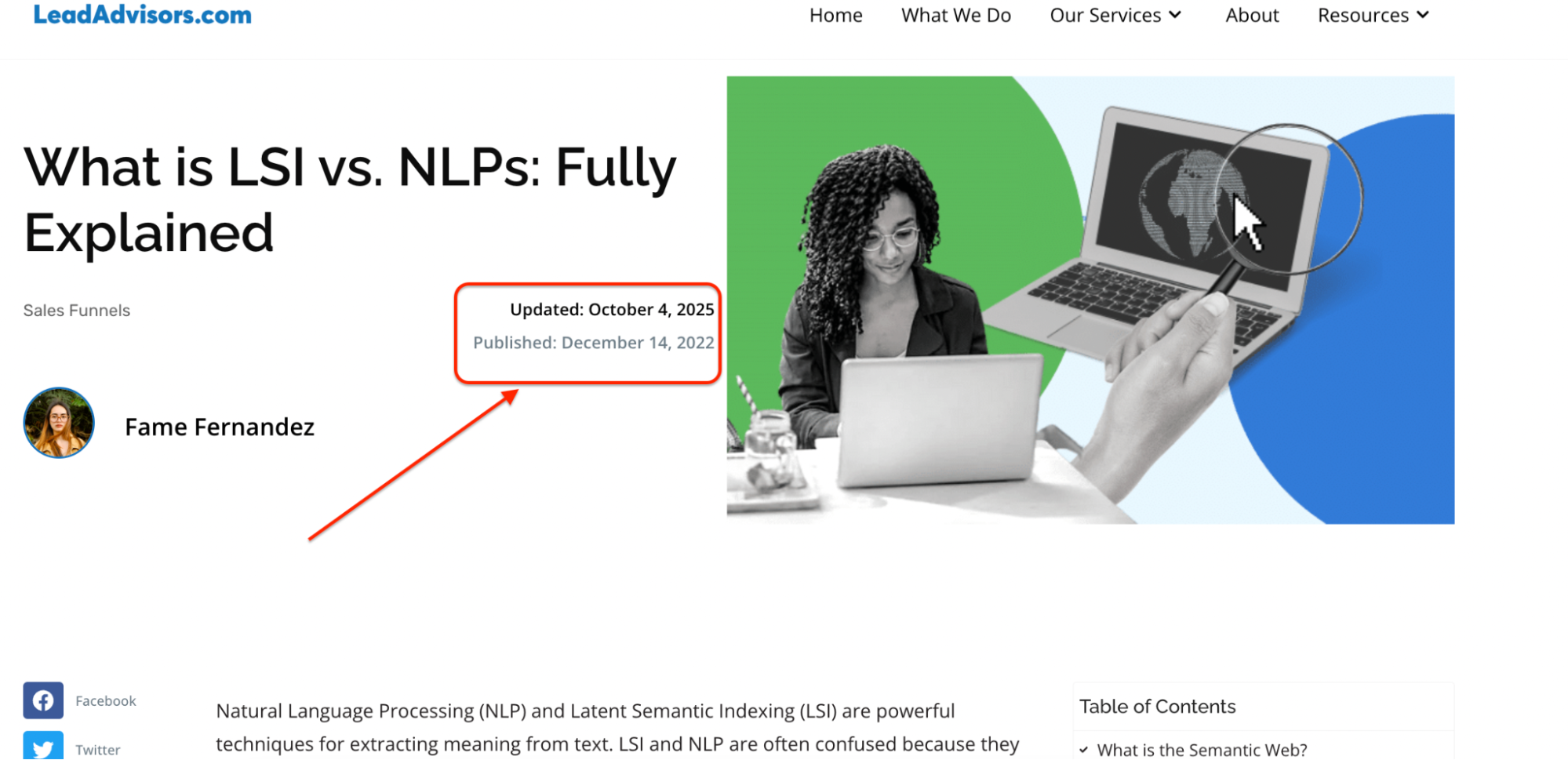
Refresh old pages with new information, recent project examples, and updated statistics. Google rewards sites that maintain current content. Add new FAQ sections based on questions potential clients have asked. Expand thin pages that aren’t ranking well. Update pricing ranges if costs have changed. This ongoing maintenance signals to search engines that your site remains relevant and authoritative.
Expansion
Target new service areas or construction services as your foundation strengthens. Create additional location pages for adjacent cities. Add pages for specialty services you want to promote. Launch separate landing pages for commercial vs. residential construction if you serve both markets. Strategic expansion captures more search traffic without diluting your existing rankings.
Advanced tactics
Implement video, voice search, and CRO improvements. Start a YouTube channel showcasing construction projects and embed videos on corresponding pages. Add FAQ schema for voice search optimization. A/B test different calls-to-action, form lengths, and page layouts. Install heatmapping software to see where visitors click and scroll. These refinements squeeze maximum lead generation from your growing traffic.
E-E-A-T: Building Trust and Authority
Google’s E-E-A-T framework (Experience, Expertise, Authoritativeness, Trustworthiness) directly impacts how search engines evaluate construction companies.
How to demonstrate E-E-A-T:
- Experience – Showcase detailed project case studies with challenges and solutions
- Expertise – Publish educational content that answers complex construction questions
- Authoritativeness – Earn mentions and links from respected industry publications
- Trustworthiness – Display licenses, certifications, insurance, and transparent contact information with real team photos
Consider adding a sustainability or green building page if you specialize in eco-friendly construction services. This attracts environmentally conscious clients while demonstrating forward-thinking expertise.
Measuring Your Construction SEO Success
Track metrics that directly impact your bottom line, not vanity numbers.
Key Performance Indicators (KPIs)
- Organic traffic growth – Are more people finding your site through search engines?
- Keyword rankings – Are you climbing for target terms in your service areas?
- Conversion metrics – How many form submissions and phone calls are you generating?
- Google Business Profile insights – Views, clicks, and direction requests
- Lead quality – Are incoming inquiries matching your ideal construction projects?
Essential Tools
- Google Analytics tracks traffic sources, user behavior, and conversions
- Google Search Console monitors search rankings, clicks, and technical issues
- Google Business Profile dashboard shows local search performance
- Rank tracking software (SEMrush, Ahrefs) monitors keyword positions
Review these metrics monthly and adjust your SEO strategies based on what’s working.
SEO Timeline: Setting Realistic Expectations
Construction company SEO isn’t a sprint—it’s a marathon with compounding returns.
Typical timeline:
- Months 1-3: Foundation work, minimal visible movement
- Months 3-6: Initial rankings improve, traffic starts increasing
- Months 6-12: Significant visibility gains, lead generation accelerates
- Year 2+: Dominance in service areas, consistent qualified leads
Factors affecting speed:
- Market competition level
- Current website authority
- Content quality and consistency
- Budget and resource allocation
Quick wins exist (Google Business Profile optimization shows results in weeks), but sustainable growth takes time. That’s why starting now matters more than perfect timing.
SEO vs. Paid Advertising: What’s Right for Your Construction Business?
This isn’t an either/or question—the smartest construction companies leverage both strategically.
When Paid Ads Make Sense
- Launching in a new service area
- Promoting seasonal services
- Generating immediate leads while SEO builds
- Testing new construction services
Why SEO Wins Long-Term
- Leads cost 60% less than paid advertising over time
- Authority compounds—rankings improve as you invest
- You own the asset (unlike rented ad visibility)
- Higher trust factor with organic results
The winning approach? Run paid ads for immediate leads while building organic visibility through construction SEO. As your search rankings improve, gradually reduce ad spend while maintaining lead volume.
Common Construction SEO Mistakes to Avoid
Even well-intentioned SEO efforts can backfire. Avoid these pitfalls:
❌ Duplicate content across service pages – Reusing the same text with city names swapped
❌ Ignoring mobile optimization – Most construction searches happen on phones
❌ Neglecting Google Business Profile – It’s free visibility you’re leaving on the table
❌ Keyword stuffing – Unnatural repetition that hurts readability and rankings
❌ Buying backlinks – Low-quality links damage more than help
❌ Set-it-and-forget-it approach – SEO requires ongoing optimization
❌ Targeting wrong keywords – High-volume terms that don’t convert
The best insurance? Work with construction SEO specialists who understand the industry’s unique challenges and opportunities.
Frequently Asked Questions
How can SEO help my construction company?
SEO transforms your website into a lead-generation machine by making your construction services visible when potential clients search online. Instead of relying solely on referrals or expensive traditional advertising, you’ll attract qualified leads actively searching for what you offer.
What’s the best local SEO strategy for contractors?
Focus on three pillars: (1) Optimize your Google Business Profile completely with photos, reviews, and accurate information, (2) Create dedicated service area pages for each location you serve, and (3) Build consistent citations across local directories. These tactics deliver the fastest local visibility improvements.
How long before I see SEO results?
Expect 3-6 months for meaningful movement in search engine rankings and 12 months for substantial, compounding results. Quick wins like Google Business Profile optimization can generate leads within weeks, but sustainable organic growth requires patience and consistency.
Should I invest in SEO or paid ads?
Both serve different purposes. Paid ads generate immediate leads while you’re building SEO momentum. However, SEO delivers better long-term ROI with lower cost-per-lead once rankings are established. The most innovative approach combines both: ads for immediate results, SEO for sustainable growth.
Can SEO work for multi-location construction firms?
Absolutely. Multi-location companies benefit enormously from local search optimization by creating location-specific pages, optimizing individual Google Business Profiles, and building local citations for each market. This strategy enables you to dominate search rankings across all service areas simultaneously.
Conclusion: Your Construction SEO Roadmap
The construction industry has undergone a fundamental shift online. While your craftsmanship hasn’t changed, how clients find you has. Construction companies that invest in strategic SEO are capturing more qualified leads, improving profit margins, and building predictable project pipelines—all while competitors wonder where the work went.
The winning formula combines technical excellence, local search optimization, authority-building content, and off-page credibility. It’s not about gaming search engines—it’s about becoming the obvious choice when potential clients search for construction services in your area.
The question isn’t whether SEO works for construction businesses. It’s whether you’ll start building your online presence before or after your competitors dominate the search results.
Frequently Asked Questions
How can SEO help my construction company?
What's the best local SEO strategy for contractors?
How long before I see SEO results?
Should I invest in SEO or paid ads?
Can SEO work for multi-location construction firms?
Ready to Turn Your Construction Website Into a Lead-Generation Machine?
Stop leaving money on the table while potential clients find your competitors online. Construction SEO isn’t just marketing—it’s the most powerful long-term investment you can make in your business growth. When you combine technical optimization, local targeting, and authority building, your website becomes your top sales channel.
The contractors winning the best projects aren’t always the best builders—they’re the ones clients find first. Make sure that’s you.












